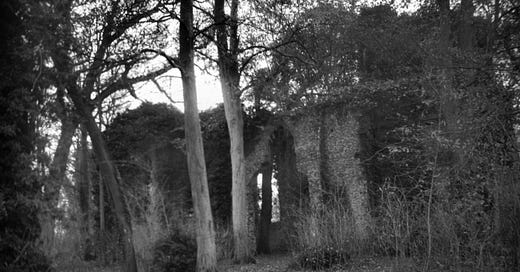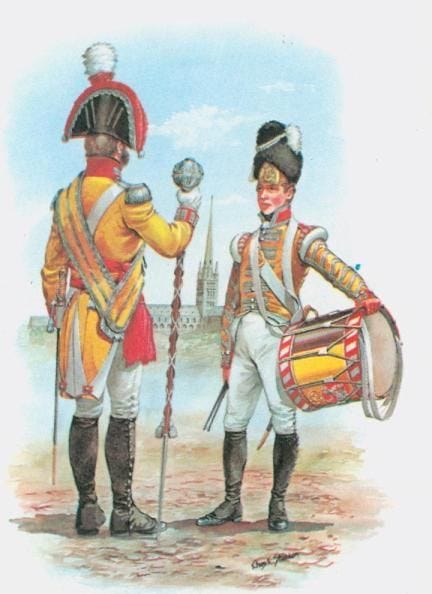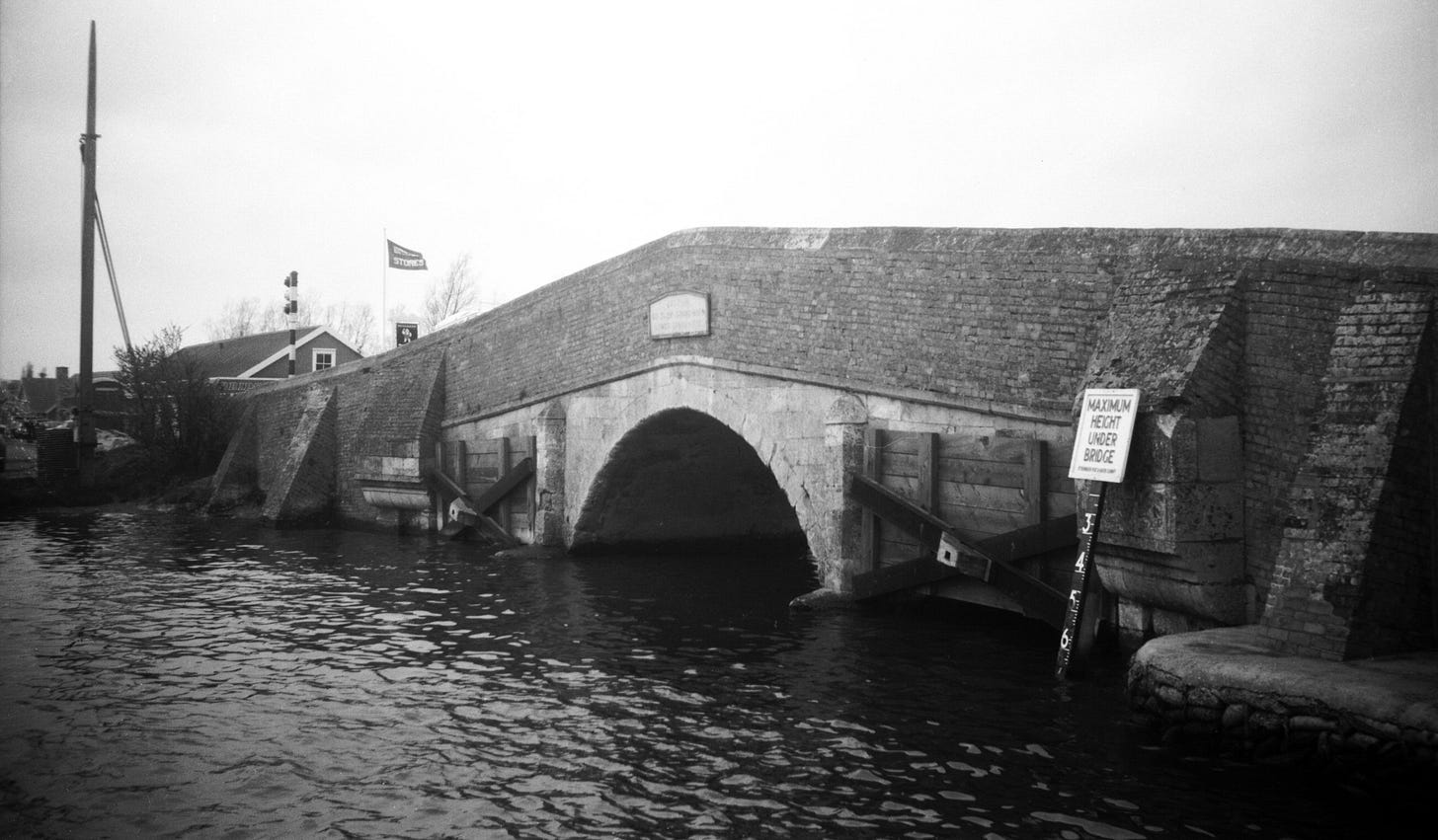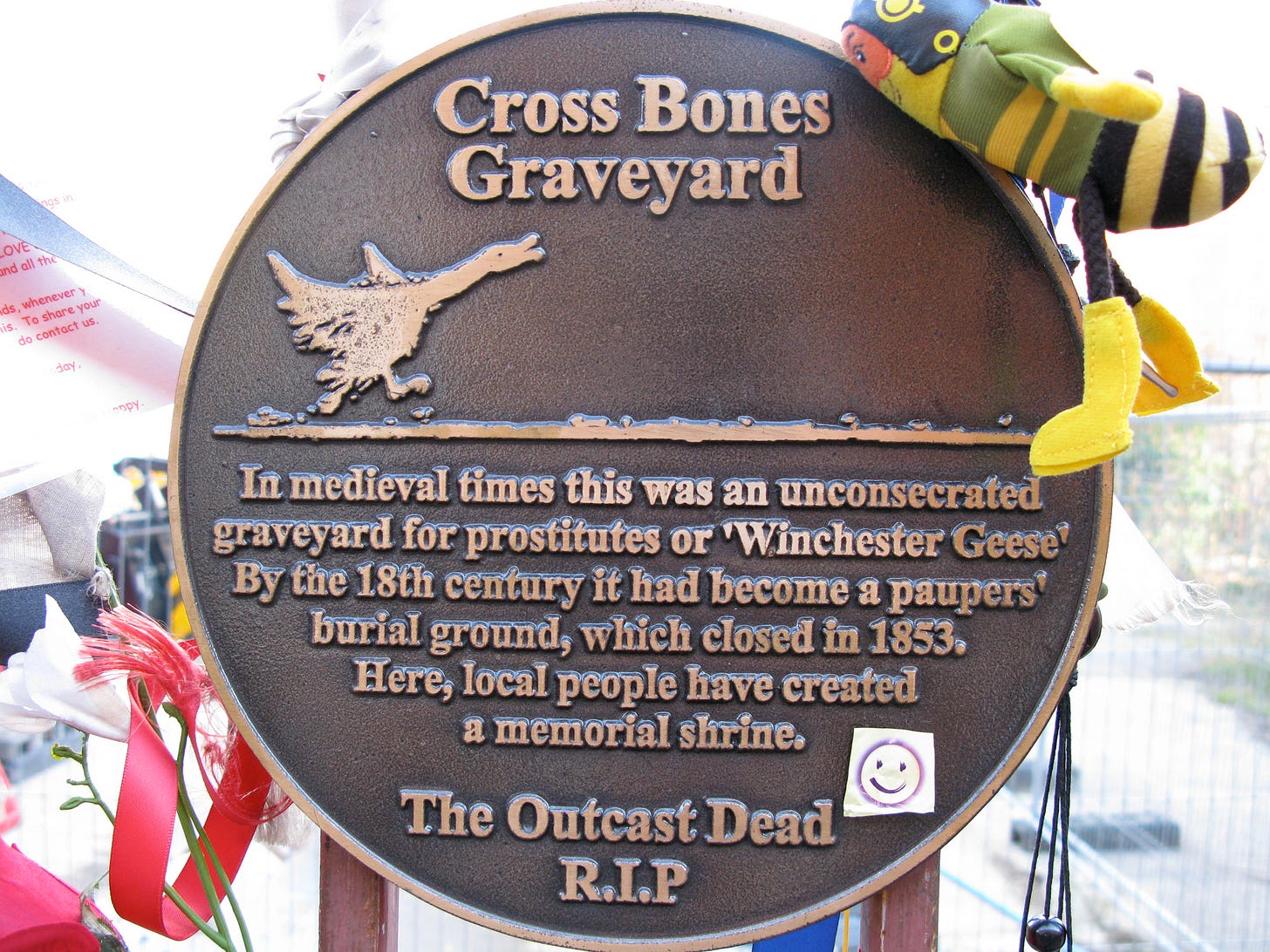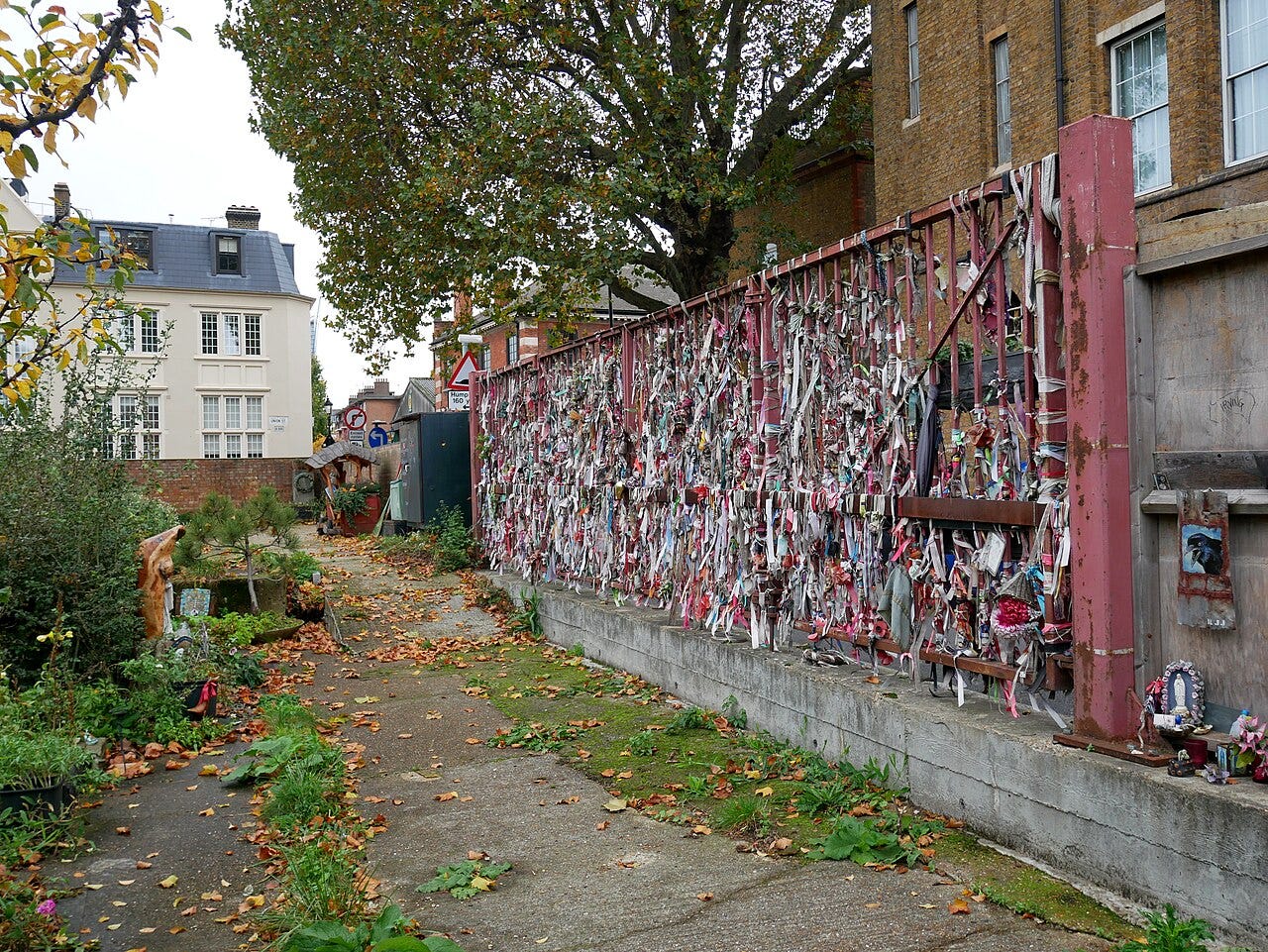A note from Siofra
Good morning folklore folks,
I hope Jack Valentine dropped by to see you yesterday.
We’ve been up to so much since our last newsletter. Stacia and I took ourselves off on a little road trip around south Norfolk. Mainly for a bit of church crawling but also to gather photos for a story we’ll be sharing on the website soon. Stacia is the best person I know for planning little adventures.
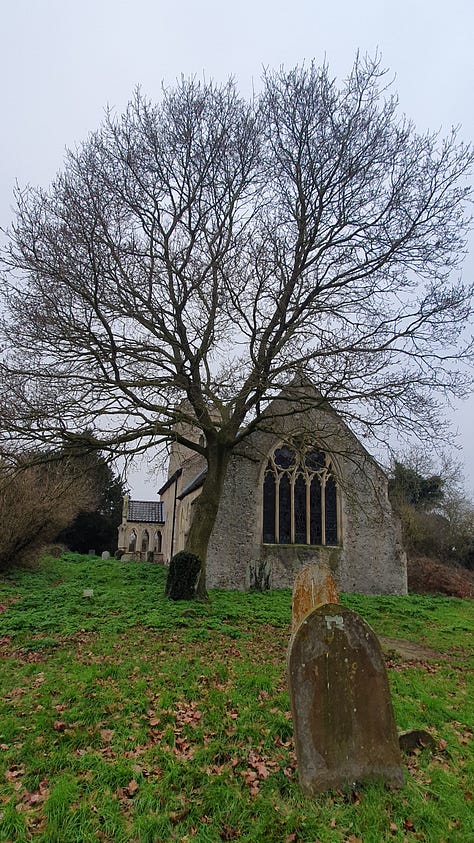

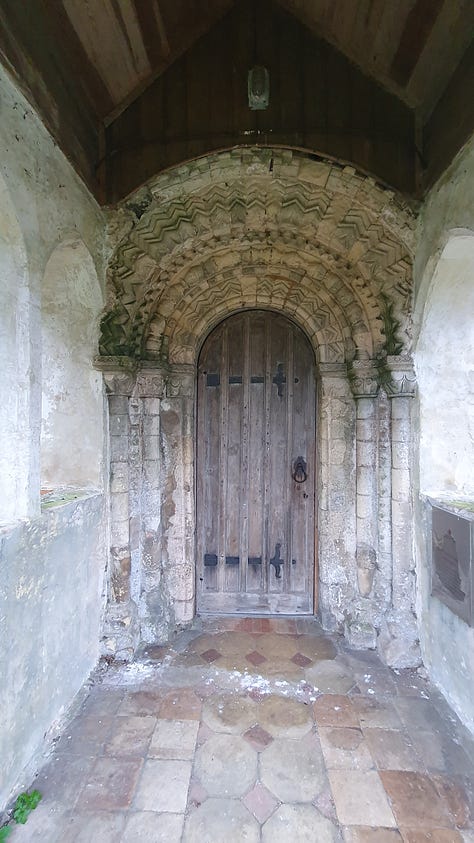
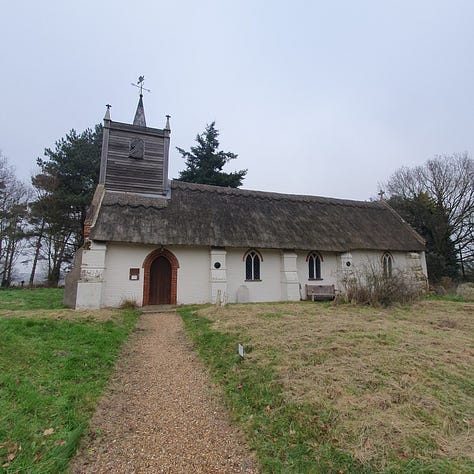
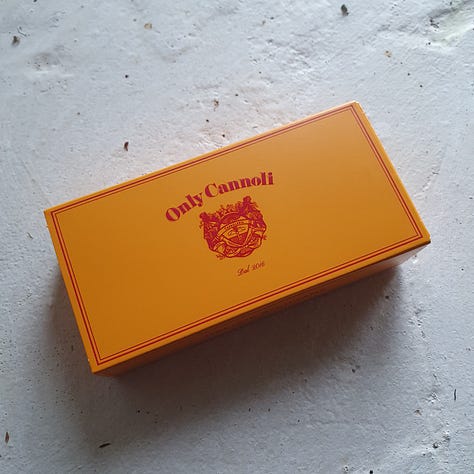
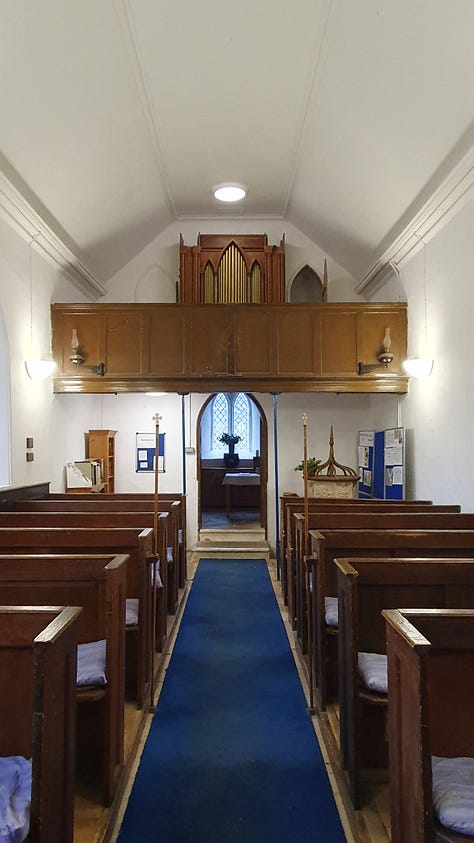
Next week is a busy week for us. We have Adam Soper coming along to Carrow House for a talk and performance on Wednesday. Friday 21 Feb we have the Norfolk Folklore Society Quiz Night at The Holloway, and then Sunday 23 we are back at The Holloway for the February Craft Club.
Our first Craft Club at the Holloway was so fun. Thank you so much to everyone who came along. I was full of the usual fear that no one would turn up, but it was a full house. And I think everyone had a nice time. There seemed to be lots of discussion about the themes I handed out to people. I can’t wait to hear if people have made trips out to the places where their tales are based. I really need to get started on mine.
There are a handful of tickets left for our screening of Night of the Demon at Cinema City in March. We were originally in the smallest screen , but we sold all the tickets in 24 hours so we were upgraded to Screen 1. If you fancy coming along you can get tickets HERE.
I think that’s it for know. We’ll have some more events to announce and we have lots of stories to share on the website (including one reader story, with a photo!) over the coming month, so keep an eye out!
Siofra
💚
A note from Stacia
January has been cold, long and surprisingly busy. Recovering from a hospitality Christmas and a trio of colds of varying severity, there have been some folklore treats in amongst the forward planning, snot and admin.
There was, of course, the Pagan Moot’s Twelfth Night ceremony on Mousehold Heath which set the course of the year and the Straw Bear festival in Whittlesey with the Norfolk Folklore Society ‘Away Day’ meet-up.
I went with my daughter’s partner, Liam – a Straw Bear virgin. We had arranged to arrive and then call Siofra to find her in the crowds, but as I called, I realised she was sat right next to me on a bench with husband Pete and familiar Peanut: proof that we are weird magnets, as if we didn’t know it already.
On the way home I treated Liam to a personal meet and greet with the waxwork figure of Sarah Hare in the Hare Chapel of the Church of Holy Trinity in Stow Bardolph.
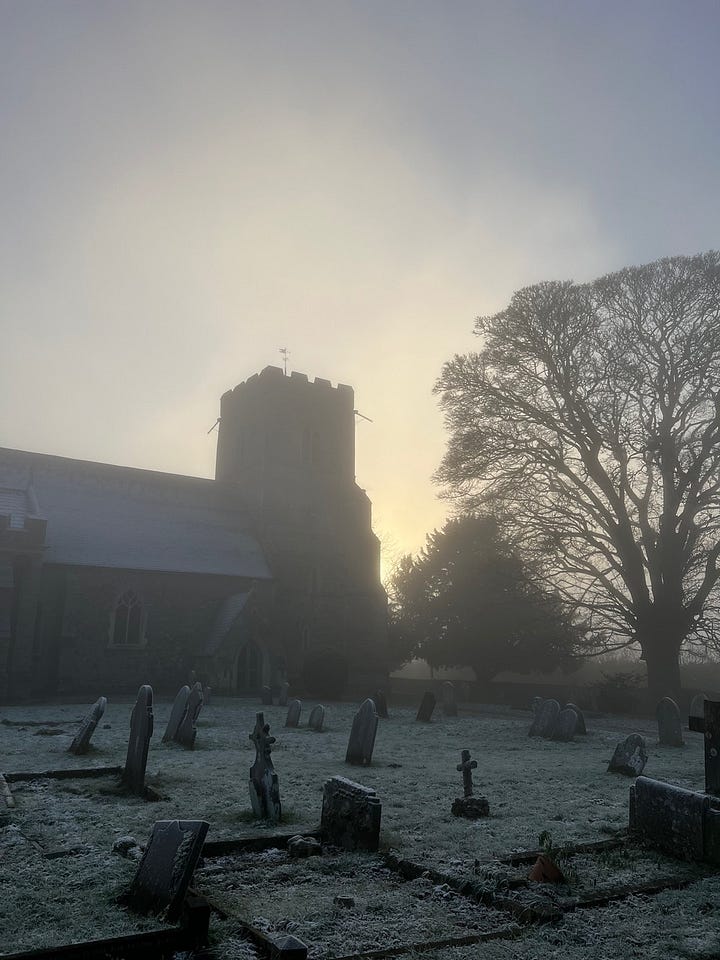
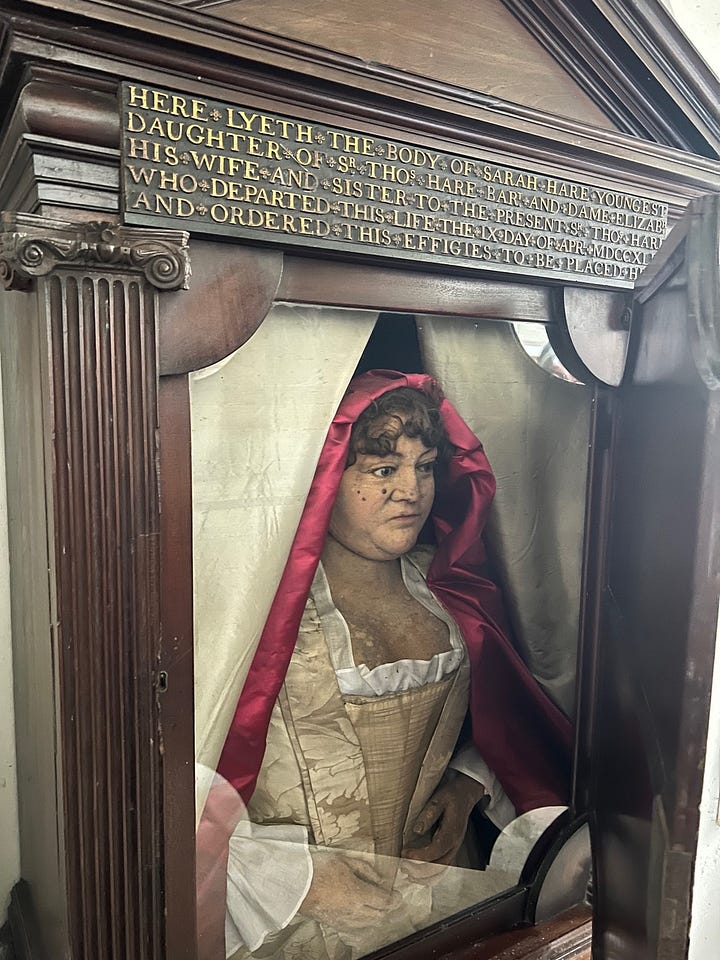
Behind the door of a mahogany cabinet lies the lifelike wax effigy of Sarah, who was a local unmarried gentlewoman born in 1689 who died in April 1744, apparently from blood poisoning caused by pricking her finger when sewing. A proper fairytale death.
Just the previous year she had stated in her will that: “I desire to have my face and hands made in wax with a piece of crimson satin thrown like a garment in a picture hair upon my head and put in a case of Mahogany with a glass before and fix’d up so near the place were my corps lyes as it can be with my name and time of Death put upon the case in any manner most desirable…”
And 282 years later, here she is. The hair, it is said, is the model’s own…it is the only surviving wax funerary figure in England outside Westminster Abbey, well worth a look.
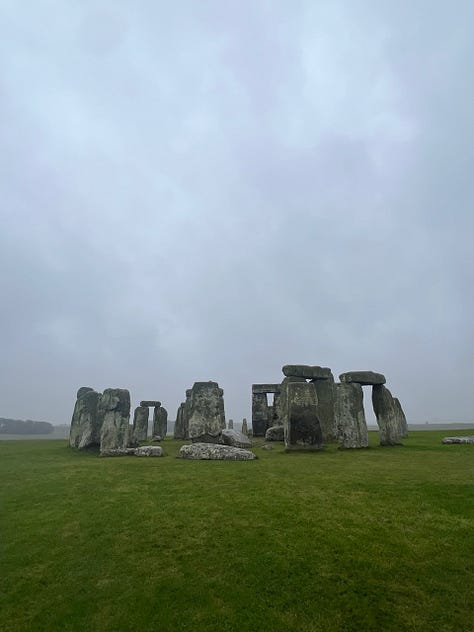
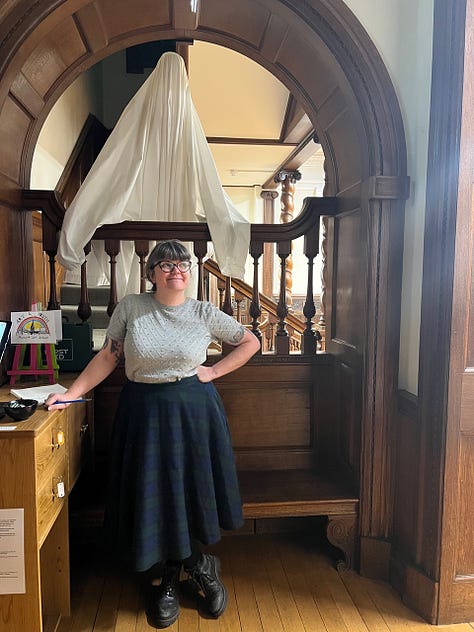

There was the NFS talk with Neil Storey giving us food for thought about Siofra’s very favourite subject, UFOs, a night out at The Holloway to see The Feathered Thorns and Justin Hopper of @oldweirdalbion fame with a performance of The Great Satanic Swindle, several meetings about Secret Projects AND I had a return visit to Mary Shelley’s House of Frankenstein in Bath and Stonehenge. I swear the ancients were firing ice needles in our faces as we approached the stones, I have never known rain like it.
February looks just as busy with lots of NFS treats planned PLUS I have the Cursed Goat’s Head of Strumpshaw as my project for Siofra’s NFS craft challenge which will keep me from mischief. Well, some mischief.
Stay weird, pals, love Stacia X
The magic of Candlemas
Candlemas, celebrated on February 2nd, marks the midpoint between the winter solstice and the spring equinox, a moment in the calendar where light begins to push back the dark. Rooted in both Christian tradition and ancient pagan practices, Candlemas is steeped in folklore, symbolizing renewal, purification, and the promise of warmer days ahead.
In Norfolk, Candlemas was historically celebrated with the blessing of candles in churches, each one representing hope and protection against the lingering chill of winter.
Farmers would look to the weather on Candlemas Day for signs of the season ahead, echoing the old rhyme:
If Candlemas Day be fair and bright,
Winter will have another flight.
If Candlemas Day brings cloud and rain,
Winter won’t come again.
This day was also associated with the goddess Brigid in pre-Christian traditions, a figure of fertility, healing, and poetry. It was believed that on Candlemas Eve, Brigid would visit homes to bless them, and families would leave offerings such as bread or milk by the hearth.
Candlemas is a time when the veil between the physical and spiritual worlds feels thin. Folklore tells of candles flickering without a draft, believed to signal the presence of spirits or a divine blessing.
Whether seen as a Christian feast day, a pagan festival, or simply a seasonal milestone, Candlemas remains a moment of reflection and quiet magic, where light triumphs over darkness and nature begins its gentle awakening from winter's grasp.
A strange Valentine for February, the Ice-Skating Ghost of Potter Heigham
It was the winter before Waterloo, bitterly cold, and Norfolk’s Broads were thick with ice and perfect for skating. In Potter Heigham, the icy grasp of winter didn’t cool the ardour of two young lovers whose romance was blossoming despite a frosty reception from close quarters.
A drummer boy, home on leave, fell in love with a village girl and the pair made plans to marry before he was called back to his duties – drummers played a pivotal role in warfare, the beat of their drum sending messages during battles when voices were drowned out.
Their bright uniform made drummers instantly recognisable both by their brothers-in-arms and the enemy who would try to pick them off the battlefield and put an end to a vital line of communication.
The yellow coat with scarlet trim also made the drummer boy stand out against the ice as he skated from his home to the secret meeting place where he would spend evenings with his love, in a small hut on the edge of Hickling Broad at Swim Coots. Each night as he approached on the ice, his blades gliding across the frozen water, he would beat a tattoo on his kettle drum to let his sweetheart know he was approaching.
In his 1890 book History and Legend of the Broad District, Ernest Suffling recounts what happened after a few evenings when the star-crossed lovers had grown accustomed to being able to meet with ease thanks to the icy temperatures and a swift crossing.
It was a cold February night in 1815, daylight had melted away into starry splendour, the iced Broad stretched out in front of the drummer boy, a glittering path leading straight to the warm embrace of his love.
“...though cautioned against it, he ventured once too often – when near the wherry channel he must have gone through the ice, for only his ghost kept the appointment with the waiting girl,” wrote Suffling
“He was not found for several days as the ice was too thin to walk on, but too thick to pull through in a boat. Now he can be seen in February early in the evening skating...”
It is said that as darkness falls on cold winter nights, the beat of a drum can be heard echoing across the Broad as the poor, shivering drummer boy tries to keep his rendezvous with the girl he hoped to make his wife. Like a heartbeat, his drum announces his eternal search for his sweetheart and also serves as a warning to would-be skaters that the ice is not safe.
Another tale adds a chilling detail to the story of lost love.
According to a version of the Drummer Boy of Potter Heigham, his sweetheart had one last glimpse of him before he vanished: when she rushed to the edge of the frozen Broad after failing to hear the familiar tattoo she had grown used to.
She was heartened to see the boy skating towards her, pale and shivering, his drum making no sound – eagerly, she held out her hands to catch his and help him to shore. But as the pair touched, she felt only icy water and, as she looked down to see why her hand felt so frozen, the Drummer Boy disappeared.
Not all folklore is old…
On February 23rd, in the shadow of London’s Southwark Cathedral, people gather for the Crossbones Vigil for the Outcast.
This monthly ceremony honours the forgotten dead of Crossbones Graveyard—a resting place for paupers, sex workers, and those deemed ‘unfit’ for consecrated ground. Steeped in modern folklore and deeply rooted in community spirit, the vigil is a powerful example of how stories and traditions continue to evolve.
Crossbones Graveyard, said to have been a medieval burial site for the Winchester Geese—women licensed to work in brothels by the Bishop of Winchester—became a symbol of those marginalized by society.
Today, the vigil blends poetry, song, and moments of silence to remember these lives with dignity and love. A ribboned gate marks the entrance, draped with messages, charms, and tokens left by visitors.
Each offering speaks of remembrance, resilience, and respect for those history tried to forget. At the heart of the vigil is a shared act: attendees tie ribbons to the gate, each one a symbol of remembrance or a prayer for the outcast. Modern folklore surrounds Crossbones, with stories of spectral figures drifting among the ribbons and whispers carried on the wind.
The vigil, while solemn, also carries a spark of hope—proving that folklore isn’t confined to dusty books and ancient tales but lives, breathes, and evolves in the hands of those who remember.
The Crossbones Vigil is not just an act of memorial but a defiant celebration of life, love, and the unbroken human spirit.
NFS Alphabet: W is for Witch of East Somerton (how could it not be?)
Hidden deep within a tangle of ancient woodland near East Somerton lies a ruin frozen in time and bound in folklore.
The skeletal remains of St Mary’s Church stand as a haunting monument to a chilling tale, where nature and myth intertwine beneath the canopy of a bewitched oak tree.
The tree rises defiantly from what was once the church nave, its roots gripping the earth with an unsettling determination: local legend whispers that this tree grew from the wooden leg of an accused witch, buried alive by fearful villagers centuries ago.
Her restless spirit, it is said, still lingers here, drifting through the broken arches and casting long shadows across the carpet of leaves that now serves as the church floor.
The story varies depending on the teller.
Some claim the witch was brought here after her execution, her body hidden within the crumbling church walls.
Others believe the church was built atop her grave, sealing her malevolent power beneath stone and mortar.
The tree, now known to many as the Witch’s Finger, seems to claw skyward, pointing an eternal accusation at the heavens. Wanderers who visit this eerie place report strange sensations: the feeling of being watched, whispers on the wind, and an occasional sharp jab in the ribs from unseen hands.
Monks in shadowy robes have also been spotted lingering in the periphery, guardians of a forgotten sacred space.
If you’re feeling brave, folklore offers a ritual to summon the witch herself. Walk three times around the tree, whisper her name (if you dare discover it), and she may just appear—though few would recommend disturbing such ancient slumber.
East Somerton’s bewitched ruins are a place where time feels thin, where the veil between history and legend flutters in the wind. Whether you believe the tale or not, one thing is certain: the witch’s tree still stands, silent and watchful, as the centuries drift by like leaves on the forest floor.


